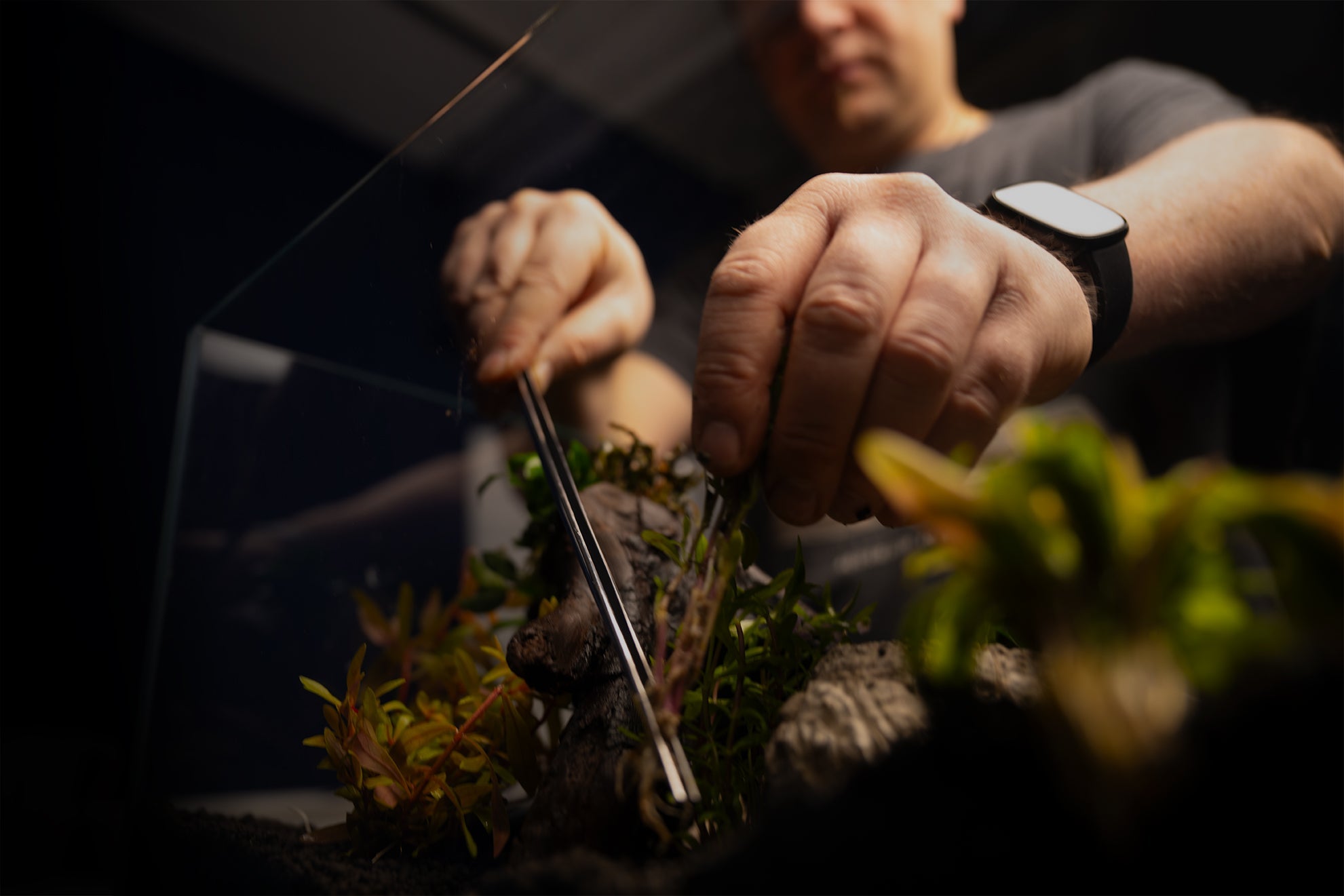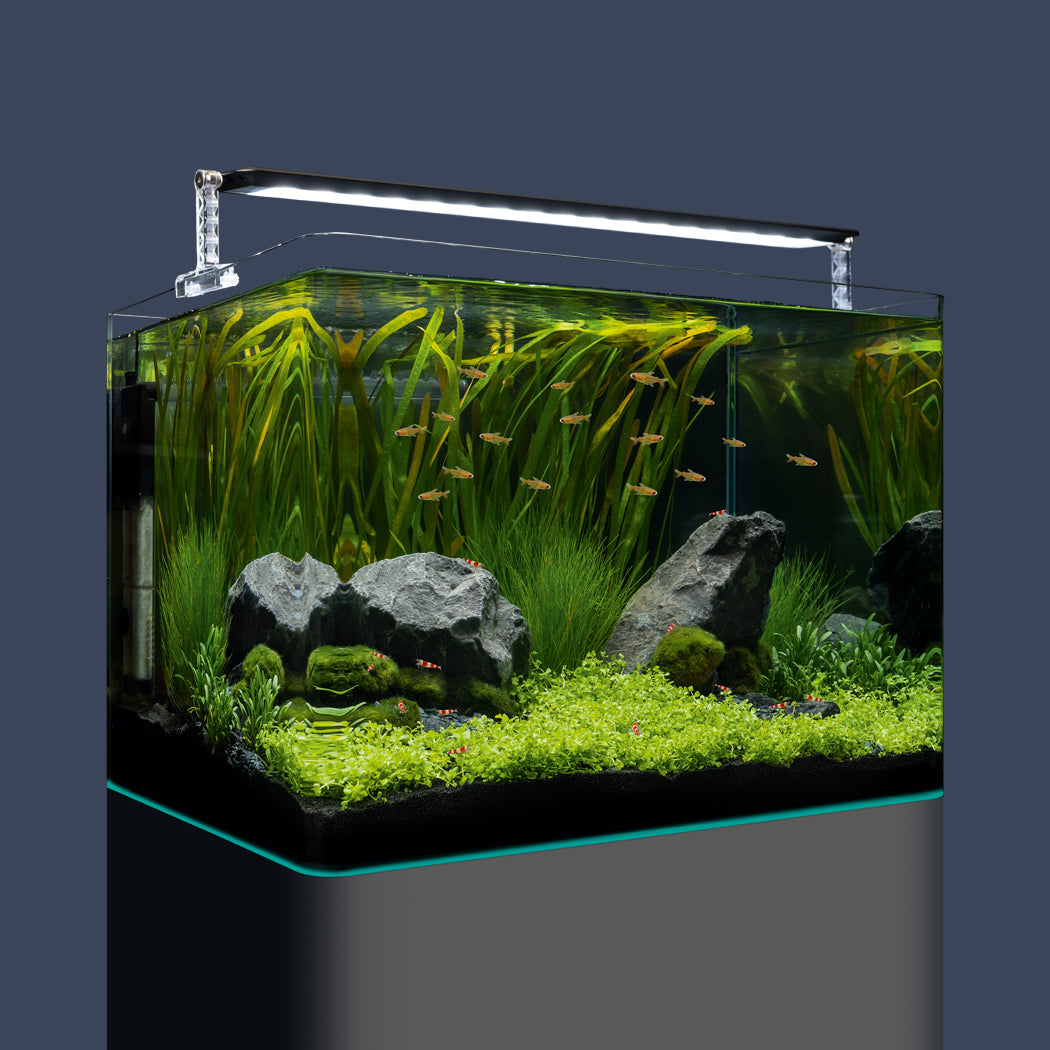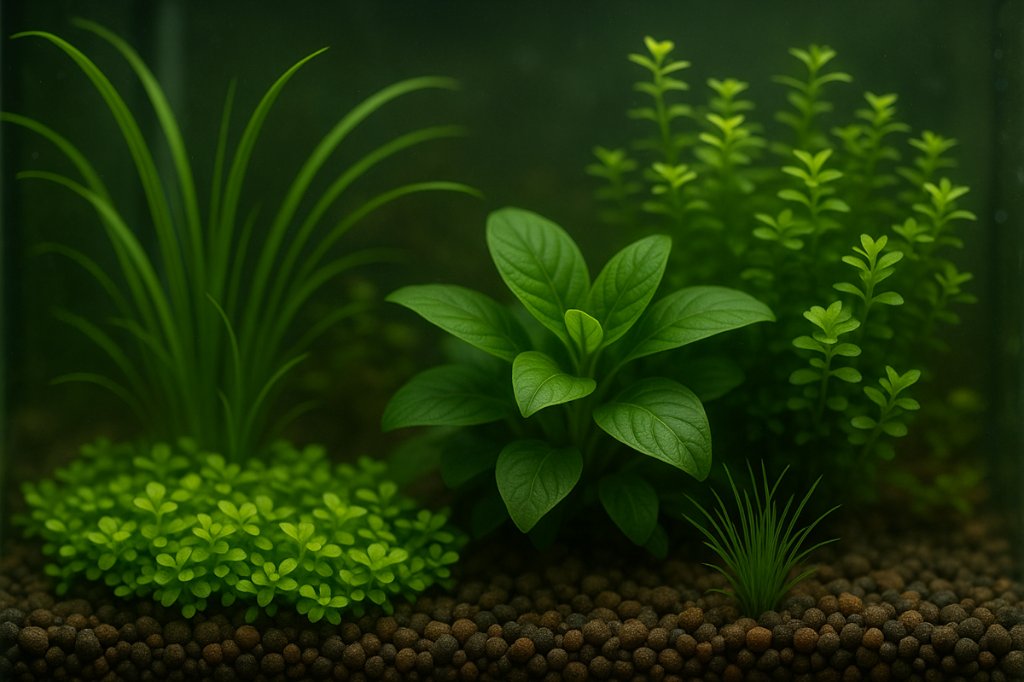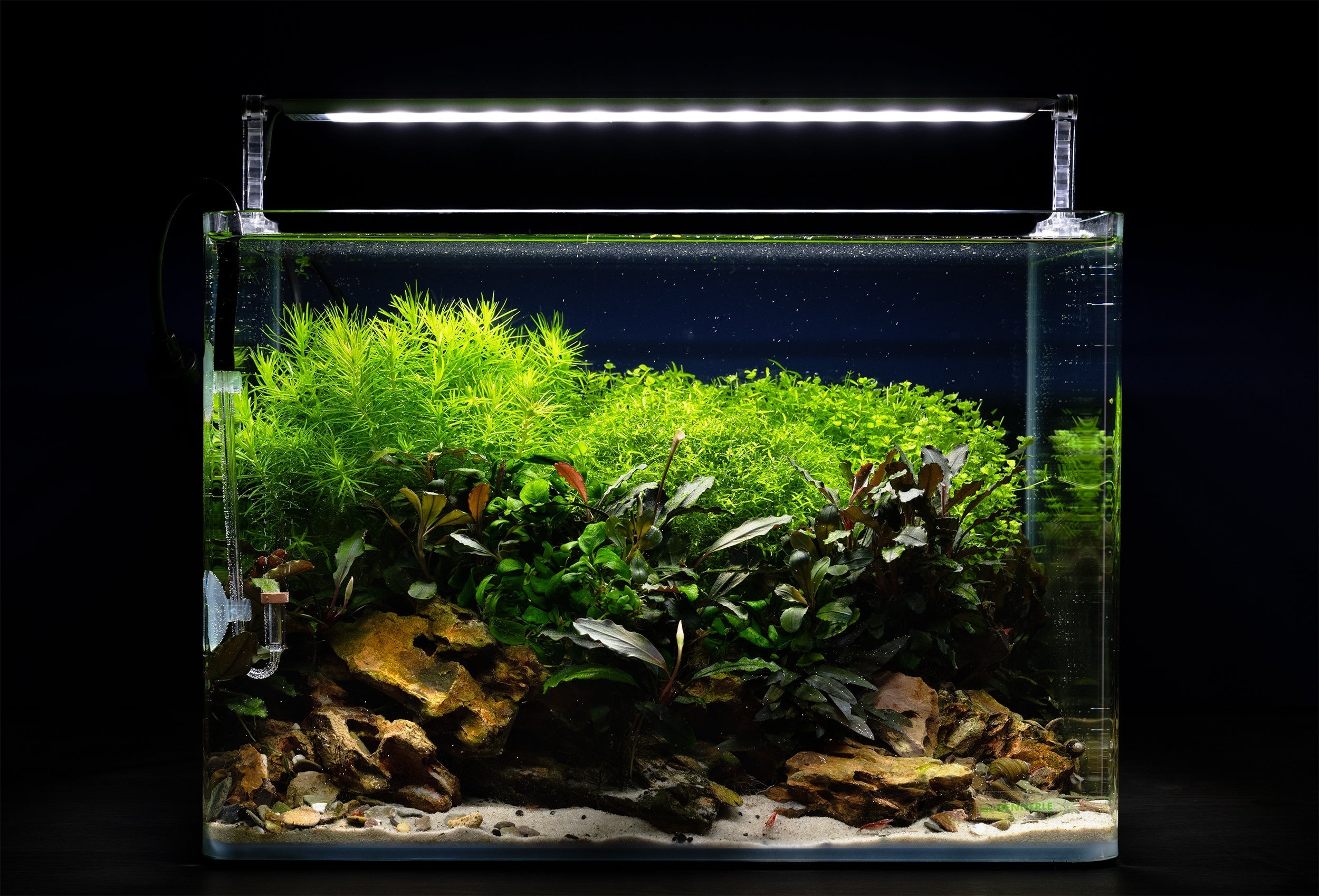Plants make an aquarium really beautiful. They give the habitat structure and depth. The lush green leaves are calming and relaxing. Aquarium plants can be used to create fascinating underwater jungles or even complete underwater landscapes.
However, plants are far more than just decoration. They form the ecological counterbalance to the animals. It is only through plants that an aquarium becomes a living ecosystem, a complete world in miniature. Nutrients are constantly introduced by feeding the animals – plants take them out again. They absorb the nutrients and convert them into leaf mass. Plants are therefore the key to a smoothly functioning aquarium.
But plants can do even more:
- Produce vital oxygen for the fish and the filter bacteria
- Reduce stress through protection and retreat options
- Serve as territorial boundaries for fish
- Provide hiding places for young fish
- Clean the water of pollutants and waste products
- Displace pathogens
- Remove algae nutrients from the water
- Provide a habitat for beneficial bacteria and microorganisms that serve as natural supplementary food for fish
In aquaria with a good plant population, fish stay healthier and grow older than in aquaria with little or no plants.
Plants are particularly important in the fight against the often troublesome algae, as they are in direct competition for nutrients. Experience shows: If the aquarium contains enough healthy, vigorously growing plants, then algae don't stand a chance.
In this guide, you will learn how to properly care for aquarium plants and provide them with optimal nutrients so that they always thrive healthily and magnificently.
The plant selection
The first step is to choose the right plants. Specialist retailers offer hundreds of different types of aquarium plants. There are all kinds of leaf sizes from a few millimeters up to 10, 20 or 30 cm in length. The leaf shapes range from round to oval, elongated, lanceolate and finely pinnate. Some species have rich dark green leaves, some have bright red leaves or exciting leaf markings.
Which species you want to cultivate is a question of personal preference and technical conditions. There are turf-forming species, rosette plants, stem plants, mosses, ferns and epiphytes that grow on stones or roots. Some grow slowly, some quickly.
Aquarium plants sometimes differ greatly in their requirements for light, water values and nutrient supply. Information on their requirements can be found on the internet in aquarium plant databases, in the descriptions in online shops, in specialist books or on the plant labels in pet shops. This allows you to choose the right plants before you buy. In the Dennerle beginner's guide we recommend robust and proven plants for the initial set-up.
Light is particularly important for planted aquariums. Inexpensive aquarium sets often only have weak lighting for cost reasons. Plants with low light requirements are ideal here. High-quality aquarium sets usually have medium-intensity lighting. Plants with higher light requirements also feel at home here. Plants with high light requirements require high-intensity lighting, which may require an additional light.
The design of the aquarium, including the appropriate plant community, should be planned in advance. A planting plan is very helpful here. Planting and arranging the plants then goes quickly and smoothly and no plants need to be moved later. To do this, transfer the floor plan of the aquarium onto a sheet of paper as seen from above. Draw in the technical equipment such as the filter and water heater, then the decorative elements (stones, roots). Finally, place the individual groups of plants.
A distinction is made between foreground, middle ground and background plants. Small or turf-forming species are chosen for the foreground. Half-height plants are suitable for the middle ground, e.g. Cryptocorynes (water cups) or Echinodorus (sword plants). And tall plants, especially fast-growing stem plants, are suitable for the background. Contrasts in shape and color create excitement and make the aquarium interesting. This is why you should always plant different-looking species next to each other. Small leaves contrast with large ones, round ones with elongated ones and red ones with green ones.
The quantity of plants
The choice of plants and, in particular, the quantity of plants have a major impact on the aquarium, especially when setting it up for the first time. Basically, the more plants and the more fast-growing species, the better for the aquarium. The aquarium will then be much more stable and annoying algae will have virtually no chance.
Our recommendation: when setting up a new aquarium, plant approx. 70 – 80% of the bottom area, half of which should be fast-growing species.
After a few months, when the aquarium is biologically established and stable, you can, if desired, gradually replace some fast-growing species with slower-growing species. If algae appear shortly afterwards, this is a sign of insufficient competition for nutrients from the plants. The proportion of fast-growing (stem) plants should then be increased again accordingly.
Preparing the plants
Potted and bunched plants should be soaked in a bucket of fresh, temperate (approx. 20 °C) tap water 24 hours before planting to remove unwanted substances. To do this, remove the plants from the growing medium. If shrimps are to be kept, it is even advisable to water the plants 3 days in advance, as the small invertebrates are particularly sensitive. place the bucket with the plants in a bright window, but not in direct sunlight. The water should be changed several times to be on the safe side.
Planting the plants
Before planting, the existing roots are cut back to 1 – 2 cm. Don't worry, they will grow back quickly. This prevents damaged roots from dying and rotting. For stem plants, remove the lower leaves. With Cryptocorynes, cut off all the leaves. This may sound a little “brutal”, but they usually die when you move them anyway and then pollute the water. The plants will sprout again quickly and vigorously. With the increasingly popular in-vitro plants, the nutrient gel should be rinsed off briefly under running water. Press the plants deep into the soil and then pull them up again slightly so that the roots are pointing downwards. This will help them grow faster. It is best to work from the back to the front. Tweezers are very helpful for stem plants and small foreground plants. The final size of the respective plant must be taken into account when spacing the plants. Stem plants should always be planted in groups. The ideal spacing is when the outer leaves are just touching. A few centimetres should be kept away from the filter so that it cannot suck in the plants. Sit-on plants such as Anubias, Java fern, Bucephalandra or mosses can be attached to stones and roots with a fine nylon thread (fishing line) or glued on with a special plant glue.
There are 2 options for filling the aquarium with water:
Option 1:
The aquarium is filled approx. 2/3 full with tempered tap water (20 – 25 °C). Make sure that the substrate is not stirred up. It is helpful to place a flat plate under the water jet. Then insert the plants and fill the aquarium completely.
Option 2:
The aquarium is planted without filling it with water. To do this, the substrate is moistened well using a spray bottle or similar. Then insert the plants. Always keep the leaves and roots of the plants moist while working so that they are not damaged. Cover the plants with kitchen paper before filling them with water. This prevents the water from becoming cloudy and the plants from floating. Now slowly fill the aquarium with tempered tap water. The same applies here: do not stir up the substrate. When the tank is filled to approx. two centimetres below the edge, remove the kitchen paper.




Share:
Expansion stages for a compressed gas system
Plant care - Part 2 - Plant nutrients